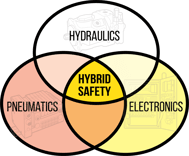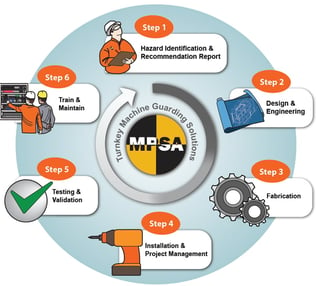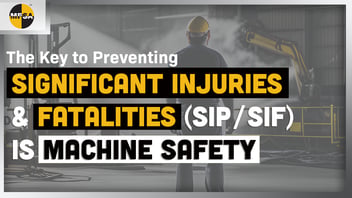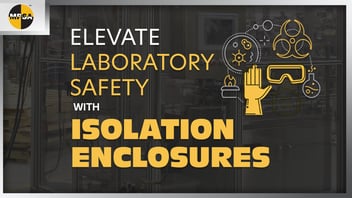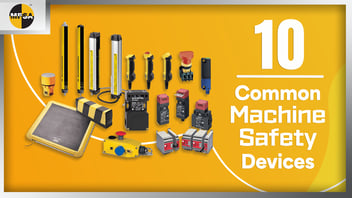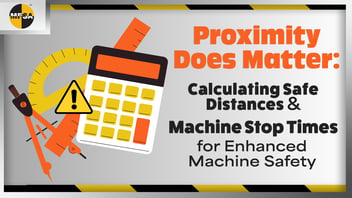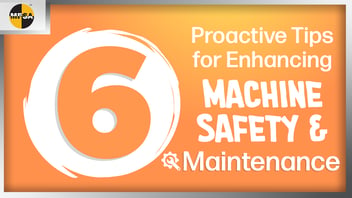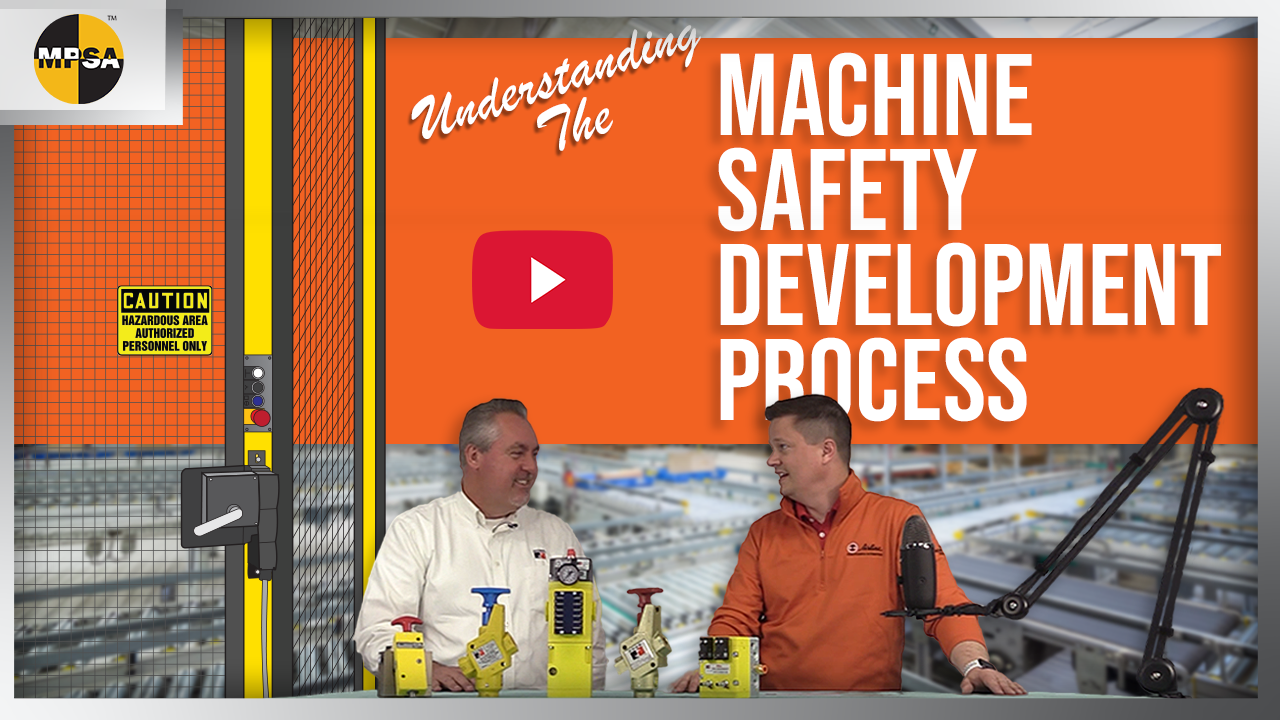
Understanding the Machine Safety Development Process: A Guide for Companies

Posted By: David Kerr
April 27th, 2023
When it comes to machine safety development, it can be a struggle to know where to start. But through many years of experience, we know a systematic process covering all aspects of machine safety is critical to ensure the well-being of employees, protect equipment and products, and avoid costly accidents. Let's explore the machine safety development step-by-step process in this video with Chris Brogli, Global Vice President of Safety Business Development at Ross Controls, and keep reading below!
Skip to a Section
Machine Safety Development Process | Why Start with a Risk Assessment?
Who Should Be Involved? | What Risks Are Assessed?
Functional Specification | Why is Design Verification Best Practice? | Contact Us!
What is the Machine Safety Development Process?
The machine safety development process creates a documented and systematic process of ensuring safe procedures are maintained at all times.
Step 1: Risk Assessment - Process of evaluating potential hazards that should be addressed.
Step 2: Functional Specification Development- Defines how the system needs to operate and run in every mode of operation.
Step 3: Selection Mitigation or Risk Reduction Devices - This will depend entirely on your application, but the largest factors involved are often cost and application fit.
Step 4: System Design - Looking at the best ways to integrate the selected devices into your current system.
Step 5: System Installation - Integrate the designed system.
Step 6: System Validation - The documented process of testing that ensures the efficacy of the design and installation.
Essentially, the machine safety development process is a comprehensive way to evaluate and address potential hazards throughout the manufacturing process.
-
Why Start with a Risk Assessment?

Risk assessments are a systematic process of identifying potential risks. If you don't do a true assessment, you may not identify all the potential risks. For example, the video refers to an example of a young EHS manager who saw a hazard and immediately put a guard in place without doing a proper assessment. A few days later, he found the guard had been removed. When he asked his employees why they moved the guard, they said, "Because we couldn't do our job with it in the way." A risk assessment would have identified that.
|
Machine Safety Risk Assessment
|
-
Who Should Be Involved?
 To conduct a comprehensive risk assessment, it's important to involve a variety of personnel. This includes the operators who interact with the machine on a regular basis, as well as those involved in cleaning, maintenance, troubleshooting, and repair. It's essential to evaluate each mode of operation, so you can identify all the tasks associated with each mode, and with each person involved. This way, all risks can be identified and addressed properly.
To conduct a comprehensive risk assessment, it's important to involve a variety of personnel. This includes the operators who interact with the machine on a regular basis, as well as those involved in cleaning, maintenance, troubleshooting, and repair. It's essential to evaluate each mode of operation, so you can identify all the tasks associated with each mode, and with each person involved. This way, all risks can be identified and addressed properly.
-
What Risks Are Assessed?
Most of the time, people only look at normal operations when they do their risk assessment, but they ignore the abnormal situations, such as when a machine jams or when a changeover or cleaning is required. At the end of the day, All sources of potential energy should be evaluated and looked at during the risk assessment, including hydraulics, pneumatics, electronics, gravity, etc.
|
Learn more about Hybrid Safety More than 60% of modern industrial machines involve other energies besides electrical energy. Learn hybrid safety solutions using a combination of electrical, electronic, electro-mechanical, and fluid-power devices to control all hazardous energy sources. |
Why is Functional Specification Necessary?
 A functional specification determines what needs to happen during normal production to gain the most productivity out of the machine while also making it safer. A functional specification is necessary because it defines how the machine needs to operate for each mode of operation. For example, it might define the needs when the machine is in manual mode and when it's in teaching mode. Each mode of operation should have a functional spec. defining what the safety needs are; that way, it's designed into the system.
A functional specification determines what needs to happen during normal production to gain the most productivity out of the machine while also making it safer. A functional specification is necessary because it defines how the machine needs to operate for each mode of operation. For example, it might define the needs when the machine is in manual mode and when it's in teaching mode. Each mode of operation should have a functional spec. defining what the safety needs are; that way, it's designed into the system.
Why is Design Verification a Best Practice?
 Design verification allows companies to calculate what Performance Level (PL) or Safety Integrity Level (SIL) they're achieving before they buy the first component. It keeps companies from wasting money and resources by ensuring that they're purchasing components that meet their needs and are safe for their employees.
Design verification allows companies to calculate what Performance Level (PL) or Safety Integrity Level (SIL) they're achieving before they buy the first component. It keeps companies from wasting money and resources by ensuring that they're purchasing components that meet their needs and are safe for their employees.
Summary
The machine safety development process is critical for ensuring the well-being of employees, protecting equipment and products, and avoiding costly accidents. You should start with a risk assessment, involve personnel from all modes of operation, assess all sources of potential energy, and develop functional specifications for each mode of operation. Then you can efficiently address your needs by selecting the proper mitigation devices, integrating them into your system, and going through the validation process to ensure all of the risks were addressed, and the safety measures put into place actually work. By implementing these steps, you can ensure that their manufacturing processes are as safe as possible.
|
Machine Safety Recourses
- MPSA website
- Ross Controls
- Request a risk assessment
- Contact Us!
- The MPSA Turnkey Machine Safety Solution
- MPSA's Services
Subscribe to our blog
Most Recent
Ensuring machine safety is a regulatory requirement and crucial to maintaining a safe and efficient working environment. The complexities of...
No matter the severity of the injury, whether it's a near miss, serious injury, or fatality, taking proactive measures can help prevent future SIF (...
It's that time of year when ghosts and goblins come out to play, and while we enjoy a good scare during the Halloween season, there's one thing that...
Safety must stand as an unwavering pillar in any laboratory setting, ensuring innovation thrives without compromising the well-being of those at the...
At your facilities, the utmost priority is the safety of your employees and the integrity of your operations. Every day, your machines are crucial in...
Ensuring the safety and well-being of employees operating industrial machinery requires a deliberate and well-designed approach. Applying “quick fixes
Did you know there's a crucial connection between machine safety maintenance and the well-being of your workers? It's true! And as technology...

The Trusted Turnkey Checklist: How to Find the Right Machine Safety Provider for Your Upgrade Project
Here at MPSA, we define turnkey machine safety solutions as designed, built, installed, validated, and ready to operate. But finding a trusted...



